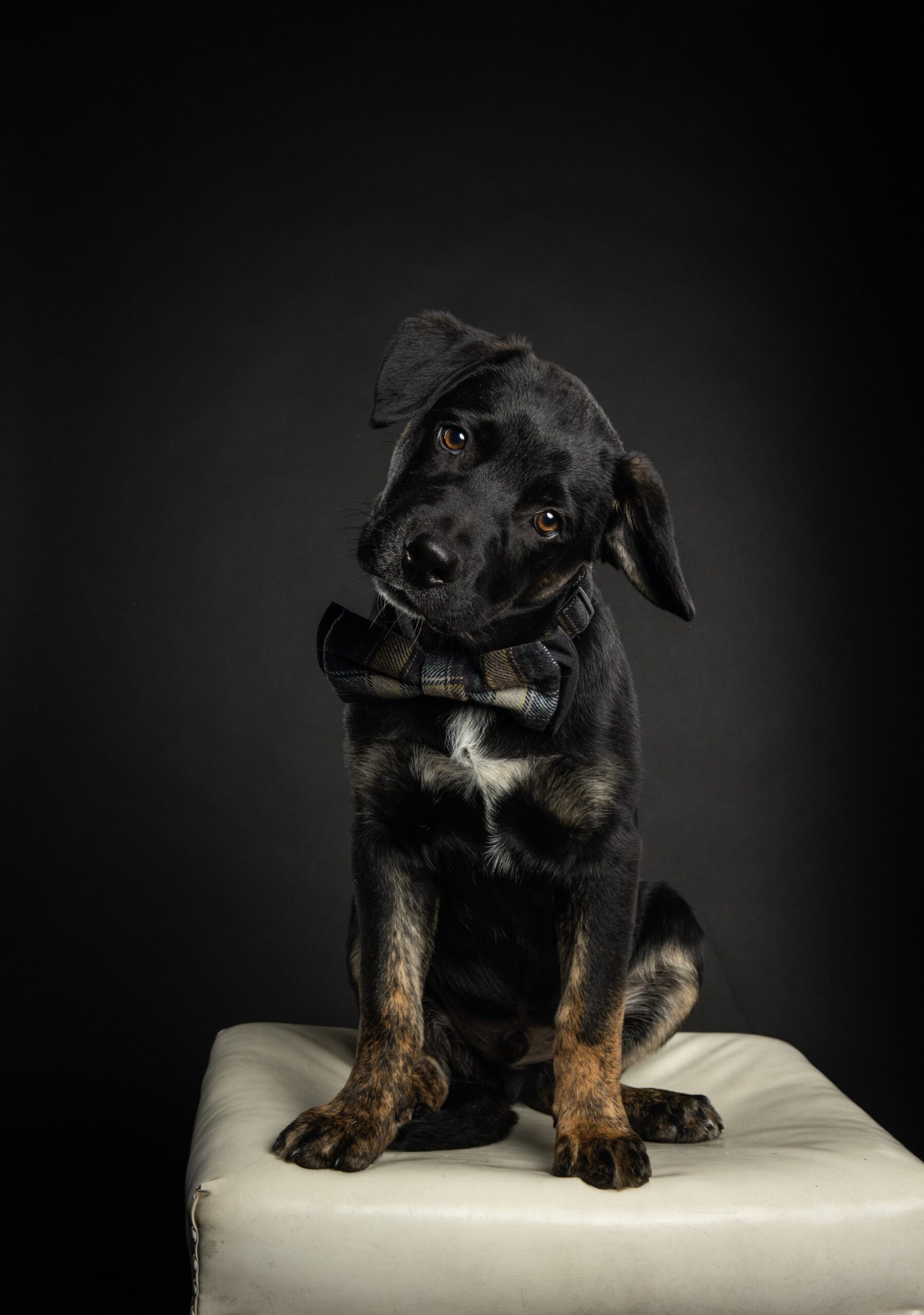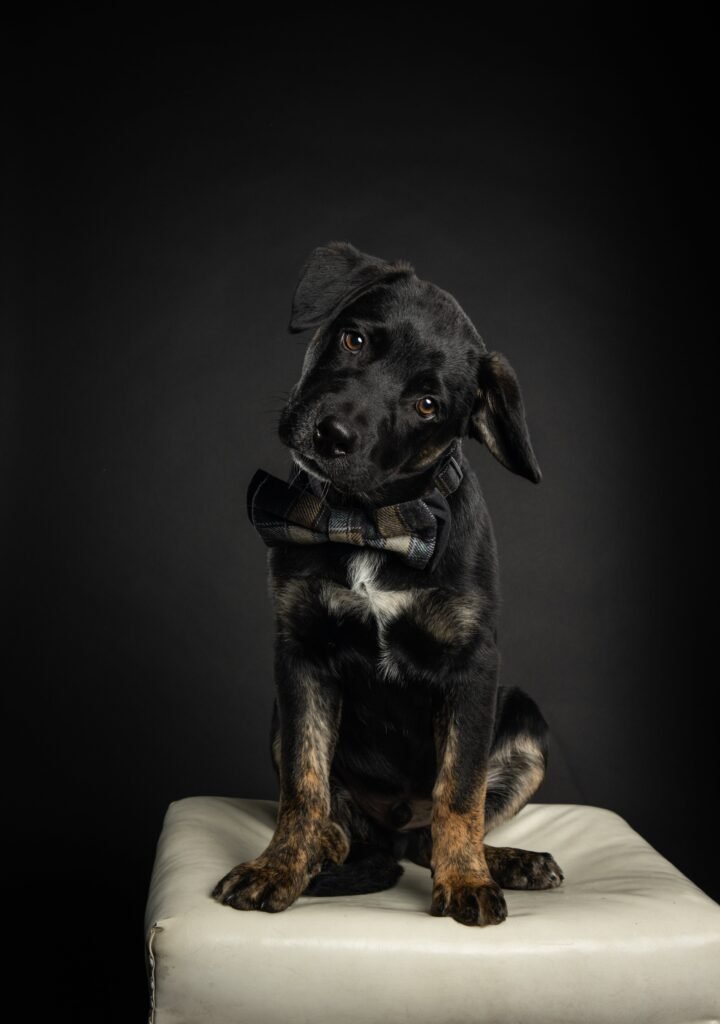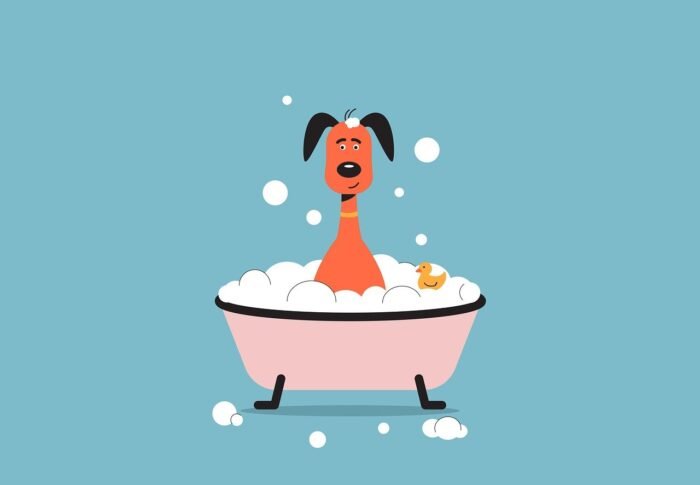
Proven Methods for Crate Training
If you’re looking for effective ways to crate train your furry friend, look no further! In this article, you’ll discover some tried-and-true methods that have been proven successful in crate training dogs of all ages and breeds. Whether you’re a newbie looking to crate train your puppy or an experienced owner seeking effective strategies, these crate training tips are here to help you create a comfortable and secure environment for your beloved pet. So, let’s get started on this crate training journey together!
Choosing the Right Crate Size
Find products like these on Amazon!
Measure Your Dog’s Size
When it comes to crate training, choosing the right crate size is essential for your dog’s comfort and safety. Start by measuring your dog’s size to determine the appropriate crate dimensions. Measure your dog’s height from the floor to the top of their head and length from the nose to the base of the tail. Additionally, measure their width by wrapping a measuring tape around the widest part of their chest. These measurements will help you select a crate that provides enough space for your dog to stand up, turn around, and lie down comfortably.
Consider Your Dog’s Growth
It’s important to consider your dog’s growth when selecting a crate size. If you have a puppy, keep in mind that they will grow quickly, so choose a crate that accommodates their expected adult size. Many crates come with dividers that allow you to adjust the crate’s size as your puppy grows. This ensures that the crate remains a suitable size throughout their crate training journey. By considering your dog’s growth, you can avoid having to purchase multiple crates as they outgrow their initial one.
Ensure Ample Space for Comfort
In addition to selecting the right crate size based on your dog’s measurements and growth, it’s crucial to provide ample space for comfort. Your dog should be able to stretch out, stand up, and turn around without any restrictions. A crate that is too small can cause discomfort and stress, while a crate that is too large may not provide the secure and cozy environment that dogs naturally seek. Finding the right balance between space and coziness can help create a positive association with the crate and make crate training a smoother process.
Setting Up the Crate
Select a Suitable Location
Choosing the right location for your dog’s crate is key to a successful crate training experience. Find a quiet and peaceful area in your home where your dog will feel comfortable and safe. Avoid placing the crate in high traffic areas or near loud appliances that may startle your dog. Ideally, the crate should be located in a space where your dog can still be part of family activities while having their own designated resting area. This will help your dog associate the crate with positive experiences and strengthen their bond with you.
Make the Crate Comfortable
To make the crate inviting and comfortable for your dog, consider adding soft bedding, such as a cozy blanket or crate pad. This will provide a comfortable surface for them to lie on and help create a sense of security. However, it’s essential to choose bedding that is safe and easy to clean. Opt for materials that are machine washable and avoid anything that could pose a choking or ingestion hazard. Additionally, ensure that the bedding doesn’t take up too much space in the crate, allowing your dog enough room to move around comfortably.
Add Familiar Smells
Introducing familiar smells to the crate can help your dog feel more at ease and relaxed. Place an item with your scent, such as a t-shirt or blanket that you have used, inside the crate. This will provide a comforting reminder of your presence and make the crate feel more like a den. You can also consider using pheromone sprays or diffusers specifically designed to create a calming environment for dogs. These can help reduce anxiety and stress, making the crate a more inviting space for your furry friend.
Introducing the Crate

This image is property of images.pexels.com.
Find products like these on Amazon!
Keep the Door Open
During the initial stages of crate training, it’s crucial to keep the crate door open to allow your dog to explore the crate at their own pace. By doing so, you’re creating a positive association with the crate and allowing your dog to become familiar with their new environment. This also helps prevent feelings of confinement or restriction. Keep the door secured in an open position using a hook or a clip to ensure it doesn’t accidentally close on your dog, which could create negative associations with the crate.
Encourage Exploration
Encourage your dog to explore the crate by using positive reinforcement techniques. Place treats or toys near the entrance of the crate, enticing your dog to approach and investigate. Reward them with praise and treats when they show any interest in the crate, such as sniffing or stepping inside. Gradually increase the distance of the treats and toys inside the crate, encouraging your dog to venture further in. This slow and positive approach helps build confidence and curiosity, making your dog more comfortable with the crate over time.
Use Treats and Praise
Using treats and praise is an effective way to motivate and reward your dog during crate training. Whenever your dog voluntarily enters the crate or spends time inside, offer them a treat and praise them enthusiastically. This positive reinforcement helps create a positive association with the crate and encourages your dog to view it as a desirable space. Over time, your dog will learn that good things happen when they enter the crate, making the training process more enjoyable for both of you.
Establishing a Routine
Set a Feeding Schedule
Establishing a consistent feeding schedule is crucial when crate training your dog. By feeding your dog at regular intervals, you can predict when they will need to relieve themselves, making the potty training process more manageable. Feed your dog at the same times each day and monitor their eating habits to determine when they are likely to need a bathroom break. Remember to remove the food bowl after mealtime to prevent overeating and ensure that your dog has adequate time to digest their food before being crated.
Establish Regular Potty Breaks
In addition to a feeding schedule, establishing regular potty breaks is essential for successful crate training. Take your dog outside to the designated potty area immediately after they wake up, after each meal, and before crate time. This routine will help your dog develop good bathroom habits and minimize accidents inside the crate. Be patient during potty breaks and provide plenty of praise and rewards when your dog eliminates in the appropriate area. Consistency and positive reinforcement will reinforce their understanding of the desired behavior.
Implement Training Sessions
Crate training provides an excellent opportunity to implement training sessions with your dog. Use the crate as a tool for teaching basic commands, such as “sit” or “stay,” and reinforce positive behaviors. Start by practicing simple commands outside the crate while gradually incorporating them inside the crate. Reward your dog with treats and praise for successfully following commands within the crate. This training not only strengthens your dog’s obedience skills but also reinforces their positive association with the crate, making it an enjoyable space for them.
Teaching Commands and Behaviors

This image is property of images.pexels.com.
Use Positive Reinforcement
Positive reinforcement is key when teaching commands and behaviors to your dog during crate training. Reward desirable behaviors such as going into the crate willingly, staying calm, and remaining quiet. Use treats, verbal praise, and affectionate gestures to reinforce these positive actions. Avoid using punishment or scolding, as it can create fear or confusion, hampering the training progress. By focusing on positive reinforcement, you can build a strong bond with your dog and make the crate training experience a positive one for both of you.
Teach the ‘Go to Bed’ Command
Teaching your dog the “go to bed” command can be a valuable tool for crate training. Start by using a command phrase such as “go to bed” or “crate time” consistently before enticing your dog into the crate using treats or toys. Pair the command with positive reinforcement, such as praise and treats, every time your dog follows the command and goes into the crate. With consistent practice and reinforcement, your dog will soon associate the command with entering the crate, making it easier to use the crate for various situations, such as bedtime or when guests visit.
Address Separation Anxiety
Some dogs may experience separation anxiety when crated. Separation anxiety can manifest as excessive barking, whining, or destructive behaviors. If your dog shows signs of separation anxiety, it’s important to address them to ensure a positive crate training experience. Gradually acclimate your dog to being alone in the crate by starting with short periods and gradually increasing the duration. Provide mental stimulation through toys or interactive puzzle feeders to keep your dog occupied while in the crate. Additionally, consult with a professional trainer or veterinarian for additional guidance on managing separation anxiety during crate training.
Gradually Increasing Crate Time
Start with Short Periods
When starting crate training, it’s crucial to introduce short periods of crate time to allow your dog to become familiar with being crated. Begin by placing your dog in the crate for a few minutes while you are still in the room. Gradually increase the time in increments of five to ten minutes, ensuring that your dog remains calm and comfortable throughout. This gradual approach prevents overwhelming your dog and allows them to adjust to being crated gradually. Remember to reward your dog with treats and praise for staying calm during these initial crate sessions.
Expand Time Gradually
As your dog becomes more accustomed to being crated for short periods, you can gradually increase the duration. Slowly extend the time they spend in the crate, always observing their behavior and comfort level. It’s essential to progress at a pace that suits your individual dog’s needs and temperament. Keep in mind that every dog is unique, and some may reach longer crate durations more quickly than others. Be patient, consistent, and attentive to your dog’s needs to ensure a positive and successful crate training experience.
Use Crate for Nap Time and Bedtime
As your dog becomes comfortable with longer periods in the crate, incorporate nap time and bedtime into their crate routine. Encourage your dog to enter the crate willingly by using the “go to bed” command paired with positive reinforcement. Make the crate a cozy and inviting space by providing comfortable bedding and familiar smells. By using the crate for nap time and bedtime, you are establishing a routine and reinforcing the crate as a safe and relaxing space for your dog. This helps your dog develop a positive association with the crate and promotes a good night’s sleep.
Preventing Common Crate Training Issues

This image is property of images.pexels.com.
Avoid Punishment
One of the most important aspects of crate training is to avoid punishing your dog when they are in the crate. The crate should be seen as a positive and safe space, not a form of isolation or punishment. Using the crate as a disciplinary measure can create negative associations with the crate and worsen any training or behavioral issues. Instead, focus on positive reinforcement, using treats, praise, and rewards to encourage desired behaviors. By maintaining a positive and consistent approach, you can create a positive association with the crate and foster a successful training experience.
Prevent Excessive Barking
Excessive barking can be a common challenge during crate training. Dogs may bark to express their anxiety, boredom, or frustration. To prevent excessive barking, it’s important to provide mental and physical stimulation both inside and outside of the crate. Engage your dog in regular exercise, playtime, and training sessions to keep them mentally and physically stimulated. Additionally, provide toys or interactive puzzle feeders to occupy your dog’s attention while they are in the crate. Positive reinforcement for calm and quiet behavior can also encourage your dog to remain calm and minimize barking while crated.
Address Whining or Crying
Whining or crying can be a natural response for some dogs when initially introduced to the crate. It’s important to address this behavior calmly and avoid reinforcing it unintentionally. Avoid immediately responding to whining or crying, as this may encourage your dog to continue the behavior to get your attention. Instead, wait for a moment of silence, then reward your dog with verbal praise and treats. Gradually increase the time between silence and reward, encouraging your dog to remain calm for longer durations. Consistency and patience are key to addressing and minimizing whining or crying during crate training.
Avoiding Crate Anxiety
Create a Calm Atmosphere
To avoid crate anxiety, it’s important to create a calm and soothing atmosphere around the crate. Designate the crate area as a relaxing space by minimizing noise and distractions in the surrounding environment. Avoid loud appliances or high-traffic areas that can startle or overwhelm your dog. Dim the lights or create a cozy den-like ambiance using soft blankets or curtains. By creating a calm atmosphere, you can help your dog feel secure and comfortable in the crate, reducing anxiety and promoting a positive association with their crate.
Provide Mental Stimulation
Mental stimulation is essential for keeping your dog engaged and content while crated. Provide toys, such as puzzle feeders or treat-dispensing toys, to keep your dog occupied and mentally stimulated. These toys can provide a rewarding challenge and help prevent boredom or frustration. Rotate the toys regularly to maintain your dog’s interest and keep them engaged. Mental stimulation not only helps alleviate anxiety and restlessness but also helps your dog associate the crate with fun and rewarding experiences.
Avoid Long Periods Alone in the Crate
Leaving your dog alone in the crate for extended periods can contribute to crate anxiety and hinder the crate training progress. Dogs are social animals and thrive on companionship, so it’s essential to avoid leaving them alone in the crate for too long. If you need to leave for an extended period, consider enlisting the help of a trusted friend, family member, or pet sitter to provide companionship and breaks outside of the crate. Alternatively, you can create a safe and dog-proofed area where your dog can roam freely, gradually transitioning to unsupervised freedom as they become more comfortable and reliable with crate training.
Troubleshooting Crate Training Challenges
Address Accidents in the Crate
Accidents in the crate can be frustrating but are often a normal part of the crate training process. It’s important to remember that accidents can happen during the early stages of training or when the crate time exceeds your dog’s bladder capacity. If accidents occur, clean the crate thoroughly to remove any lingering odors that may encourage repeat accidents. Use an enzymatic or pet-specific cleaner to eliminate traces of urine or feces. Avoid using ammonia-based cleaners, as they can smell like urine and confuse your dog. With consistent potty training and crate training, accidents should become less frequent over time.
Deal with Refusal to Enter the Crate
Sometimes, dogs may initially refuse to enter the crate, making crate training challenging. If your dog shows resistance or fear, it’s important to address their concerns patiently and gradually. Start by enticing your dog with treats or toys near the crate entrance, rewarding them for any positive interaction. Over time, gradually move the treats and toys further inside the crate, encouraging your dog to venture in. Avoid forcing or physically moving your dog into the crate, as this can create negative associations and resistance. With patience, positive reinforcement, and gradual exposure, most dogs will overcome their initial reluctance and willingly enter the crate.
Handle Resistance to Crate Training
Resistance to crate training can occur for various reasons, including fear, past negative experiences, or unfamiliarity with the crate. To handle resistance, focus on creating positive associations and gradually increasing the exposure to the crate. Start by using treats, praise, and rewards to motivate your dog and create positive experiences with the crate. Begin with short periods in the crate and gradually increase the duration as your dog becomes more comfortable. Avoid rushing the process or overwhelming your dog, as this can reinforce resistance. By using patience, consistency, and positive reinforcement, you can help your dog overcome resistance and establish a positive relationship with the crate.
Gradual Transition to Unsupervised Freedom
Supervised Time Outside the Crate
Once your dog has become comfortable with the crate, you can gradually introduce supervised time outside of the crate. Start by allowing short periods of supervised freedom in a confined area, such as a puppy-proofed room or gated space. Use this time to observe your dog’s behavior and reinforce positive behavior and commands. If your dog exhibits undesirable behaviors or shows signs of anxiety, return them to the crate for a short break before attempting unsupervised freedom again. This gradual transition allows your dog to build confidence and trust while still maintaining a secure and controlled environment.
Confined Area with Supervision
As your dog becomes more reliable and comfortable during supervised time outside the crate, you can gradually expand their freedom to a larger confined area. This may include baby gates or exercise pens that allow your dog to move around while still preventing access to certain areas. Maintain close supervision during this stage to reinforce positive behaviors and prevent any potential accidents or destructive behavior. Continue to use positive reinforcement and regularly assess your dog’s behavior and progress to ensure a smooth transition to unsupervised freedom.
Gradual Increase in Unsupervised Time
Once your dog has demonstrated reliability and positive behavior during supervised time in a confined area, you can begin gradually increasing their unsupervised freedom. Start by leaving your dog alone for short periods, such as running a quick errand or stepping out of the house for a few minutes. Gradually increase the duration of unsupervised time as your dog continues to demonstrate good behavior and reliability. Keep in mind that every dog is unique, and the speed of this transition will depend on your dog’s individual temperament and training progress. Continue to provide a safe and enriching environment for your dog while allowing them to gradually experience longer periods of unsupervised freedom.
Crate training can be a rewarding and beneficial experience for both you and your dog. By following these proven methods, you can ensure that crate training is a positive and successful journey. Remember to be patient, consistent, and attentive to your dog’s needs throughout the process. With time and effort, crate training can provide your dog with a safe and secure space while promoting good behavior and strengthening the bond between you and your furry friend.
Find products like these on Amazon!







-
-
1 day
Tagged Crate training, Nighttime Routine, positive reinforcement, Puppy training